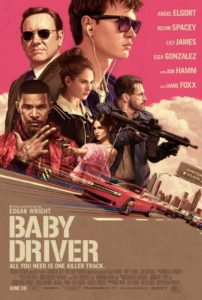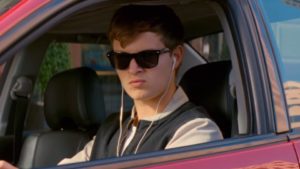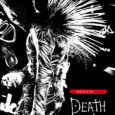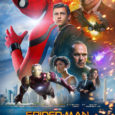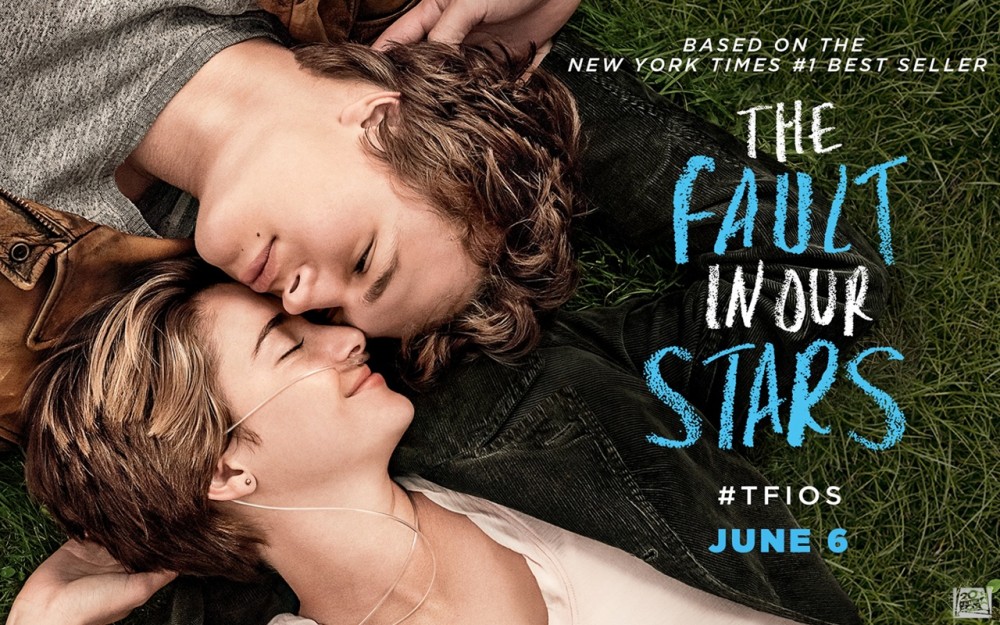Each January, I make a list of the movies that I want to see that coming year. It’s usually filled with big-budget, over-blown action flicks, because that’s what I like. This year, I had to revise my list a couple of times because I overlooked a few items that should appeal to me. One of those revisions included Baby Driver. At first glance, I wasn’t too sure about the Edgar Wright penned and directed flick but I decided to give it a shot. I’m glad I did.
Ansel Elgort is Baby, the film’s protagonist. A perfectly apropos nickname given his youthful looks, but “Baby” is all audiences know the character by throughout most of the movie. Nicknames are also a recurring trend in the movie, in which a team of thieves are gathered by the mysterious Doc (Kevin Spacey) to pull off complex heists. Think the Avengers, but they steal stuff and don’t have super powers.
The plot of the movie is thin by most standards; Baby is in for “one last job” before leaving his life of crime behind him. Naturally, the plan goes off the rails and all hell breaks loose, leaving Baby to adapt if he wants to survive and live his happily ever after.
Edgar Wright is a director who manages to put his own spin on different film genres. He breathed new life into zombie movies with Shaun of the Dead and made a legitimately fun comic book flick with Scott Pilgrim vs the World. It’s easy to expect Wright to deliver a fast-paced yet super fun heist movie, which he manages to do.
Despite the weak plot, the movie is a blast, mostly because of the characters that Wright has created. We have Baby, deep and mysterious and into a wide range of music to which he has an unnatural attachment. The audience is only allowed brief glimpses into his past, but it’s enough to puzzle together why he is the way he is. We’re also given an expository explanation as to his need for music at all times, which is delivered in a delightfully clever way by Mr. Spacey himself.
Then you have Bats, played by Jamie Foxx. “Bats” is short for “Bat-Shit,” indicating how crazy the character is. We’re given nothing about Bats’s past, yet Foxx’s portrayal of the character intimates just how deep his psychoses run. Foxx is great in this role and makes it really easy for audiences to hate him.
Then there’s John Hamm’s Buddy. An enigma for most of the film, it’s hard to gauge which way Buddy goes. He’s a bank robber, sure, but he’s also the only one who’s ever shown Baby any respect. Hamm imbues Buddy with a dead-eyed stare and cool charisma that makes him look like he was ripped right out of a Tarantino film, which makes him a perfect fit for the world of Baby Driver.
With how much we give credit to Edgar Wright for his direction and the actors for their delivery, we also need to recognize the editors, Jonathan Amos and Paul Machliss. I’m sure much of the film kept with Wright’s vision, but Amos and Machliss cut it so that it gels perfectly. A lot of the fun of the movie is within the action sequences, where the gunshots and sound effects sync up with the film’s soundtrack. It’s subtle at first; you almost don’t realize it’s happening but when you do, it adds depth to the scenes.
Speaking of the music, I can’t ignore the soundtrack as it’s an important element of the film. The song selections work brilliantly with the on-screen actions. Similar to the way Guardians of the Galaxy Vol. 2 handled its own musical numbers, Baby Drivers takes innocuous song choices and pairs them with intense, frenetic action. A tire-screeching police chase set to “Bellbottoms” by The Jon Spencer Blues Explosion? It works. An explosive gun fight in a dirty warehouse with Button Down Brass’s “Tequila” as the back drop? Flawless. (The soundtrack also features Ducky from NCIS and I never thought I’d type that sentence but here I am.)
There’s more to Baby Driver than just cool characters and an OK plot; it’s a movie that delivers an experience. From the very start, and I mean at the start of the vanity logos, the film includes a low level hum, just like the one Baby hears from his tinnitus. It accompanies almost all of the moments that aren’t occupied by music or explosions and is persistent throughout, making the audience feel just like Baby does. Sometimes it’s noticeable, sometimes it isn’t. Either way, we get a better idea of how Baby hears his world.
Baby Driver isn’t perfect, though. Baby’s world is turned around when he meets a pretty, perky waitress named Debora (Lily James). Debora’s goal is to cut and run out of town, a goal that Baby doesn’t realize he has until he meets her. James is lovely in the role but her part just runs flat. We get some back story into her character but it’s nothing of any significance. She has a whirlwind romance with Baby but she doesn’t actually change him in any way. We’ve already seen that he has a conscience despite what he does for a living; all Debora does is make him want to run away from the life he built in Atlanta.
It’s a weird dynamic, in a way, considering the relationship Wright shows us between Baby and his foster father, Joe (CJ Jones). Joe is deaf and uses a wheelchair, casting Baby in the caregiver role. Their relationship is so natural and authentic that I would find Joe a more believable reason for Baby to escape the world that he’s entrenched in. I guess you just can’t beat a pretty girl when it comes to movie tropes.
Leaving aside the stale plotline and few shallow characters, Baby Driver is a remarkable film. It’s a fun, upbeat romp in a summer overloaded with drab, ennui-filled popcorn flicks.
Grade: A-
As much as I hate to admit it, Tumblr has this incredible knack for influencing things I watch and read (see: Supernatural), so when I began seeing poster art for this upcoming movie, I was super annoyed with the number of times this showed up on my dash. Googling it told me it was a YA book about romance between two cancer patients, and I kind of rolled my eyes and forgot about it, because it sounded cliche. Then one boring Sunday, I downloaded it to my Kindle, and about two paragraphs in, I was hooked.
Tumblr didn’t ONCE mention the tears.
A few weeks later, the trailer debuted and that compilation of a minute and a half clips made my eyes well up with fat, Miyazaki sized tears. I resigned myself to the fact I’d be crying in public, and waited for the wide release, so I could see how much the movie deviated from the witty source material. From this point on, please be aware there are spoilers!
Fortunately for fans of the book, the movie stayed relatively faithful, deviating only when it came to the story of Augustus’ previous girlfriend, his struggles with his parents, and the sweet outcome for the sad swing set.
Right away, you are pulled into the story, narrated in parts by Woodley’s husky voice, and it’s overwhelming, this very real awareness of life and death. For those of you unfamiliar, The Fault In Our Stars is centered around Hazel Grace Lancaster, a 17-year-old with cancer, who has accepted how her life is in every way. Content with re-reading her favorite book and drowning in reality television, she begrudgingly obliges to her mother’s request she attend a support group. She eventually meets Isaac, a dry humored boy with eye cancer, and Augustus Waters, a charming, one-legged survivor of osteosarcoma, who cannot keep his eyes off of her. From here, you can guess that he falls in love with her, and she, knowing her cancer could take her at any minute, refuses to be more than friends, wanting to “limit the casualties” when she succumbs. This is actually where the movie shines, as you forget about the cancer part, and realize these are regular teen experiences they’re having, and it’s sort of nostalgic in its feel as the two fall in love.
Woodley and Elgort shine wonderfully in their roles as Hazel and Gus, perfectly realizing their book counterparts, something fans will definitely appreciate. Of course the moment you’re swept up in their love during their trip to Amsterdam, the hammer falls, and they can no longer hide the inevitable.
Augustus reveals to Hazel that his cancer has returned and his recent scan “lit up like a Christmas tree,” and it’s a series of moving scenes, and speeches, particularly Hazel’s eulogy and the Last Good Day. Pain demands to be felt, indeed.
I didn’t really notice the soundtrack much, maybe because I was busy stealing tissues from the sobbing person next to me, but the one tune that stuck out was a soft, folksy sounding rock song, but nothing noteworthy (haha, did you see my pun).
There really isn’t some deep message to the movie (or the book for that matter), and I think it steers away from most cheap manipulation tactics seen in cancer movies to make you cry, but you will probably leave dehydrated. I certainly did.
By the way, JOHN GREEN, go fuck yourself.
Film Review: The Fault In Our Stars
MPAA Rated PG-13. Running time: 125 mins
Directed by Josh Boone; written by Scott Neustadter and Michael H. Weber, based on the novel by John Green; director of photography, Ben Richardson; edited by Robb Sullivan; music by Mike Mogis and Nathaniel Walcott; production design by Molly Hughes; costumes by Mary Claire Hannan; produced by Wyck Godfrey and Marty Bowen; released by 20th Century Fox.
WITH: Shailene Woodley, Ansel Elgort, Laura Dern , Sam Trammell, Nat Wolff, and Willem Dafoe.


